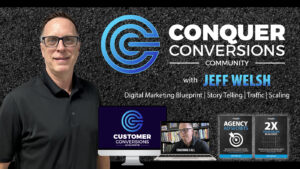The final part of our Profitable Campaigns series might sound fairly obvious. Believe it or not, many small businesses overlook this step. To be quite honest I did as well for some time, until I learned all that I was missing. Then I paid attention to the vital information I had at my fingertips.
In a time where much of our advertising is done online, there is an abundance of information collected each day through every campaign. It would be crazy to overlook the information that is so easily available.
Imagine this scenario, within a targeted ad campaign you recently ran for thirty days you were able to see the following:
- WHO visited your site
- WHAT they looked at
- WHERE they browsed
- HOW long they visited
- IF they purchased or left the site
Would this information be valuable to you for future campaigns? Of course it would! As a matter of fact, to not look at this information each month would be like shooting yourself in the foot. Without seeing where you succeed or failed in your efforts makes it really difficult to make good decisions for the future. So let’s dive a little deeper into this topic.
Analyze Your Data
The true power of targeted advertising lies in the insights it provides. Every campaign, whether wildly successful or a frustrating flop, holds valuable lessons that can help you refine your strategy and grow your business. For small business owners, analyzing data is not just about understanding what worked—it’s about uncovering why it worked (or didn’t) so you can replicate successes and avoid repeating mistakes.
The first step in analyzing your campaign data is to review your key performance indicators (KPIs). Depending on your goals, this might include metrics like click-through rate (CTR), cost-per-click (CPC), conversion rate, return on ad spend (ROAS), or engagement rates. Each metric tells a piece of the story, but together they give you a complete picture of how your campaign performed. Focus on the metrics that align most closely with your objectives to evaluate whether your campaign achieved its intended outcomes.
For successful campaigns, dig into the specifics to identify the factors that contributed to their performance. Was it the creative design, the messaging, the timing, or the audience targeting? Look for patterns across multiple campaigns to determine what consistently resonates with your audience. For example, you might discover that video ads perform better than static images or that certain headlines drive more clicks. These insights are gold when planning future campaigns, allowing you to double down on strategies that work.
Equally important is analyzing campaigns that didn’t perform as expected. Instead of viewing these as failures, treat them as opportunities to learn. Break down the data to identify weak points—was the click-through rate low, suggesting your creative or messaging didn’t capture attention? Or were conversions lacking, indicating a disconnect between your ad and landing page? Understanding where things went wrong gives you a clear starting point for improvement.
One of the most valuable aspects of data analysis is uncovering hidden trends and insights. For example, you might find that certain audience segments perform better than others, or that specific times of day yield higher engagement. These details can inform not only your ad strategy but also your broader marketing efforts.
Comparing your successes and failures side by side can also reveal patterns that might not be obvious at first glance. For instance, a high-performing ad might share a common element with another campaign that underperformed, but with a slight difference in audience targeting or creative. Identifying these nuances allows you to fine-tune your approach and develop more effective campaigns moving forward.
Don’t just stop at the numbers—consider qualitative data as well. Read through comments, feedback, or reviews that your ads generated. Customer insights can provide valuable context that complements your quantitative analysis. For instance, a product might generate a lot of clicks but few conversions because customers find the pricing unclear or the landing page confusing. These insights can help you address underlying issues that metrics alone might not reveal.
Finally, establish a routine for analyzing data regularly, not just at the end of a campaign. Ongoing monitoring allows you to spot trends early and make adjustments in real-time, preventing small issues from snowballing into bigger problems. Many ad platforms offer tools to simplify data analysis, such as Google Analytics, Facebook Ads Manager, or third-party software that consolidates reports.
Learning from both successes and failures is what transforms good advertisers into great ones. For small business owners, this process of reflection and refinement ensures you’re constantly evolving and improving your campaigns. By analyzing the data with a critical eye and applying those lessons to future efforts, you turn every campaign—win or lose—into a stepping stone toward greater profitability and growth.
CONQUER CONVERSIONS COMMUNITY
Interested in further support to help conquer conversions for your business?
 I have created a special community where I share all the secrets I have developed over the last decade. My new group known as the Conquer Conversions Community can be found over on the Skool platform.
I have created a special community where I share all the secrets I have developed over the last decade. My new group known as the Conquer Conversions Community can be found over on the Skool platform.
In the group, I teach how to increase online 💰 sales! You get the system & blueprint (step-by-step guide) we use to help businesses build & scale their online offers to achieve sales growth in a short period of time.
For a limited time, you can join for FREE, but it won’t be that way for long. Actually, the ability to join at no cost will end on December 1. At that time the community will be a paid group to be a part of, so don’t miss an opportunity to grow for FREE and join here today!

Warmest Regards,
Jeff Welsh
Founder | Leader
WelshTraining.com
Let’s Connect
